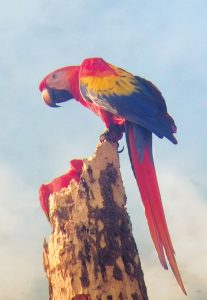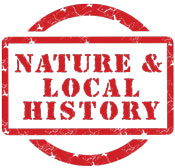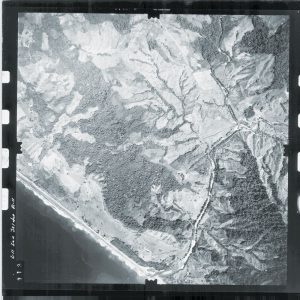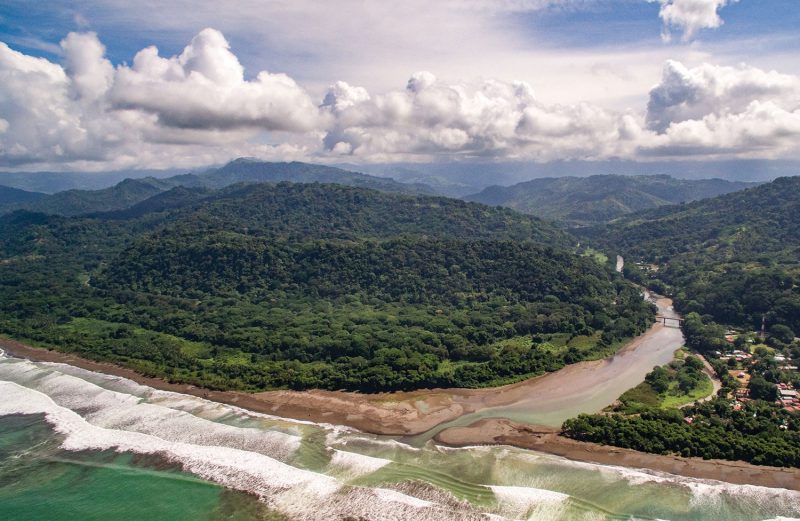Strange Partners
When You Quit Chopping the Weeds the Jungle Returns With a Vengeance

 By Jack Ewing
By Jack Ewing
Environmentalists and people in the real estate business don’t usually like each other very much. The former tend to blame the latter of environmental destruction while the latter accuse the former of obstructing development and progress. In spite of this, on a strip of coastal land in southern Costa Rica 80 kilometers long and 15 kilometers wide, nothing short of an environmental miracle has been accomplished by these two actors working separately and each doing their own thing. The area is called the Path of the Tapir Biological Corridor (PTBC), and its landscape has been transformed from one of pastures and farm land to lush tropical forest replete with wildlife. It is one of the few places on our planet where biodiversity is increasing and has been for the last 35 years.

It all began in 1987 when the Association of Friends of Nature (ASANA) was founded by a group of local people who were alarmed at rapid increase in illegal hunting in the area around Dominical. With the paving of what was formerly a jeep trail many hunting enthusiasts from other places flocked into the area and proceeded to kill the diminishing wildlife. ASANA was successful in combating the illegal hunting, and the organization grew and expanded its area of influence.

In 1990 an ambitious project called the Path of the Tapir Biological Corridor (PTBC) was initiated by ASANA. At that time about 80 percent of the area consisted of farms and ranches, and a mere 20% of the original rainforest that had once covered the entire area remained intact. Small parcels of forest here and there and several large forested areas, such as those on Hacienda Barú, Rafiki, and Rancho La Merced, prevailed mainly on the steepest parts. The goal of the PTBC was to connect these forest fragments by restoring natural vegetation between them thus creating a green corridor. It was named the Path of the Tapir because it was a place where tapirs had once been abundant but were finally extinguished by hunters in the mid-1950s. Nevertheless these large mammals were still found in the Los Santos Forest Reserve to the north and the Osa Peninsula to the south.
ASANA accomplished its objectives through environmental education, working with government programs which provide incentives for forest protection and regeneration, denouncing illegal hunting and destruction of forest, and working with those who promote ecological tourism. Tapirs haven’t yet returned permanently and begun reproducing in the corridor, but there have been numerous sightings, and most naturalists believe that within the next decade we will see their definite return.
Nevertheless the project has been enormously successful. When I first visited Hacienda Barú in 1972 only the white-faced capuchin monkeys were found here. Today we have all four Costa Rican species. Sightings of large predators such as pumas and ocelots are not unusual. Numerous new species of birds including the scarlet macaws, crested guans, oropendolas, and others now frequent the area. Ecological tourism has become an important business in the PTBC and is attracting thousands of tourists every year and generating employment for hundreds of local people.

As much as I wish I could say that the phenomenal success of the Path of the Tapir Biological Corridor (PTBC) was all the doing of ASANA, I would not be telling the truth. The late 1980’s brought the initial stages of a real estate boom. People started arriving in the area looking for land. Most potential buyers were foreigners looking for a beautiful place to build a vacation home, or a bed and breakfast. They definitely weren’t interested in raising cattle or farming rice. As land values appreciated sellers began noticing that the properties with the most natural vegetation sold best. The buyers loved seeing monkeys and toucans and other wildlife. They also loved those hilltops with the fantastic ocean views. It had never occurred to the original owners that anyone would value a steep, hard-to-access location just because you could see the ocean. Property owners stopped chopping the weeds in their pastures, and allowed the secondary forest to regenerate. A professional forester once told me: “In Costa Rica, when you quit chopping the weeds, the jungle comes back with a vengeance.” And that’s what it did.
At the same time bulldozers started cutting roads up hillsides to access those ocean view sites, and the environmentalists panicked. But the returning jungle soon overshadowed the red dirt exposed by the bulldozers. The panic gradually diminished and eventually subsided. The new owners loved the wild animals and birds, and many joined the environmental movement. Many others didn’t join an organization, but contributed to the greening of the Path of the Tapir Biological Corridor (PTBC) by allowing natural vegetation to return and protecting their properties from hunters. Open areas between forest parcels disappeared and the jungle merged into one big swath of tropical vegetation that permitted free movement of wildlife from one place to another along the width and breadth of the corridor. It was wonderful watching it happen, but few really understood the part played by the real estate boom, not even those directly involved in the process.
If anyone in the environmental movement understood the part played by the mass change of ownership in the area they certainly didn’t publicize the fact. In all fairness, the real estate boom didn’t directly contribute to the greening, rather it facilitated a change of land stewards, from those who cut down the forest and planted pasture and crops to those who quit chopping their weeds and allowed the jungle to return with a vengeance.
To my knowledge no measurements exist of the natural cover in 1985, the peak of the deforestation era and today in 2017. Looking at old and new aerial photos I estimate that around 80% of the land area had been deforested by 1985 and was being used for livestock or farming. Today the ratio of secondary and primary forest to open areas has reversed. About 80% of the land is covered with natural habitat. Thanks to these strange partners, who didn’t even know they were partners, the PTBC is very close to accomplishing its goal. Imagine what would have happened had they been working together from the beginning.
